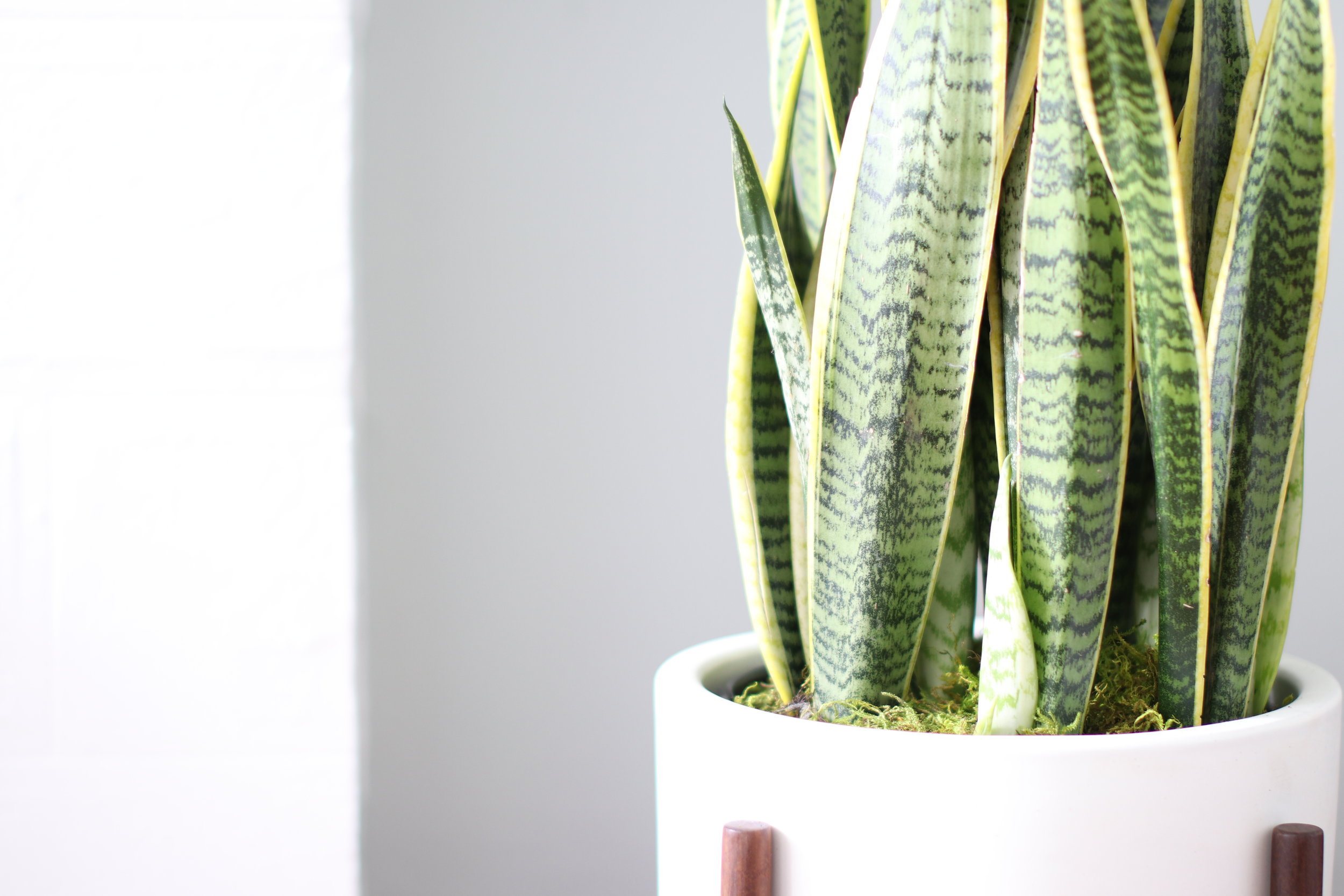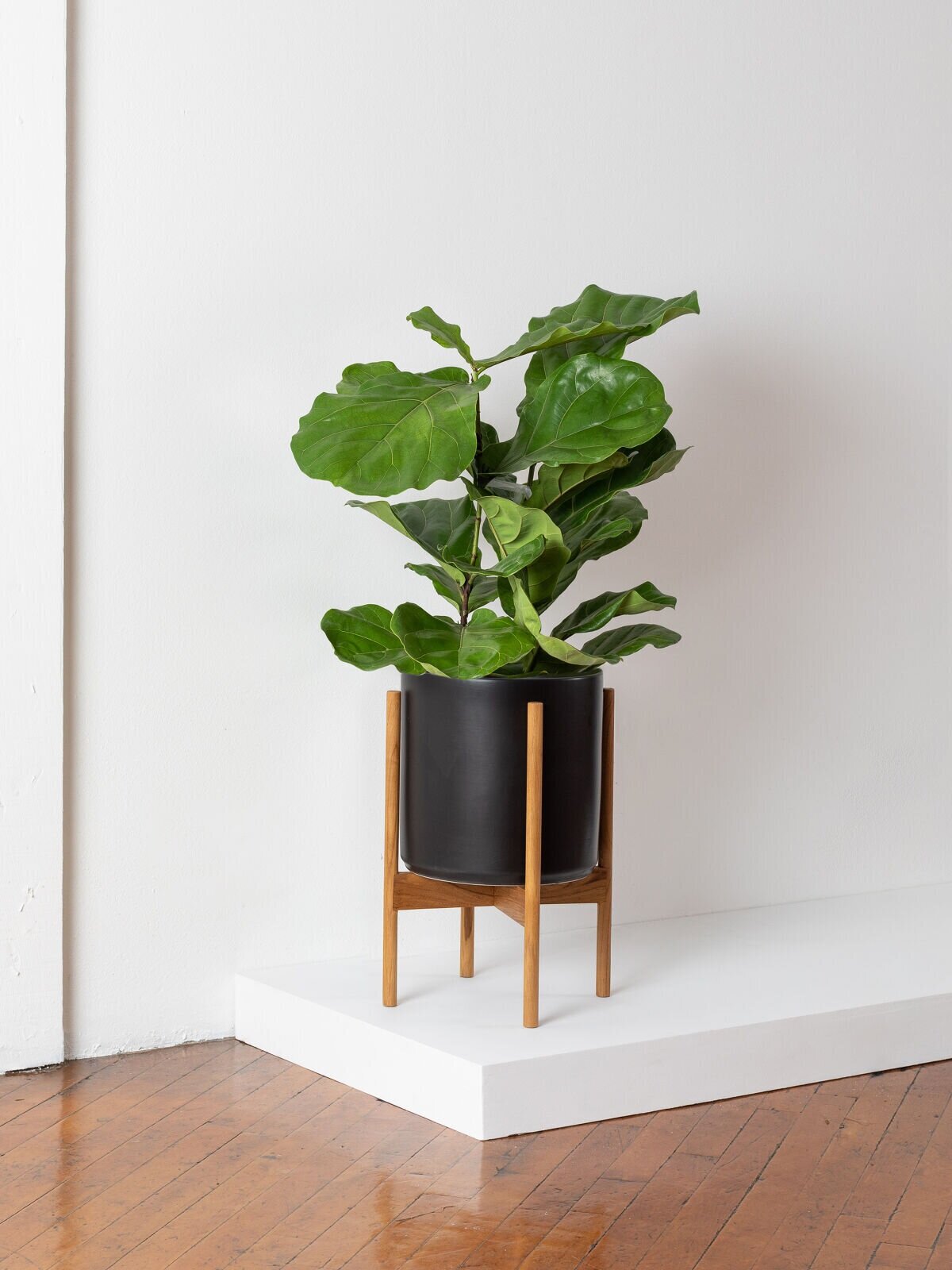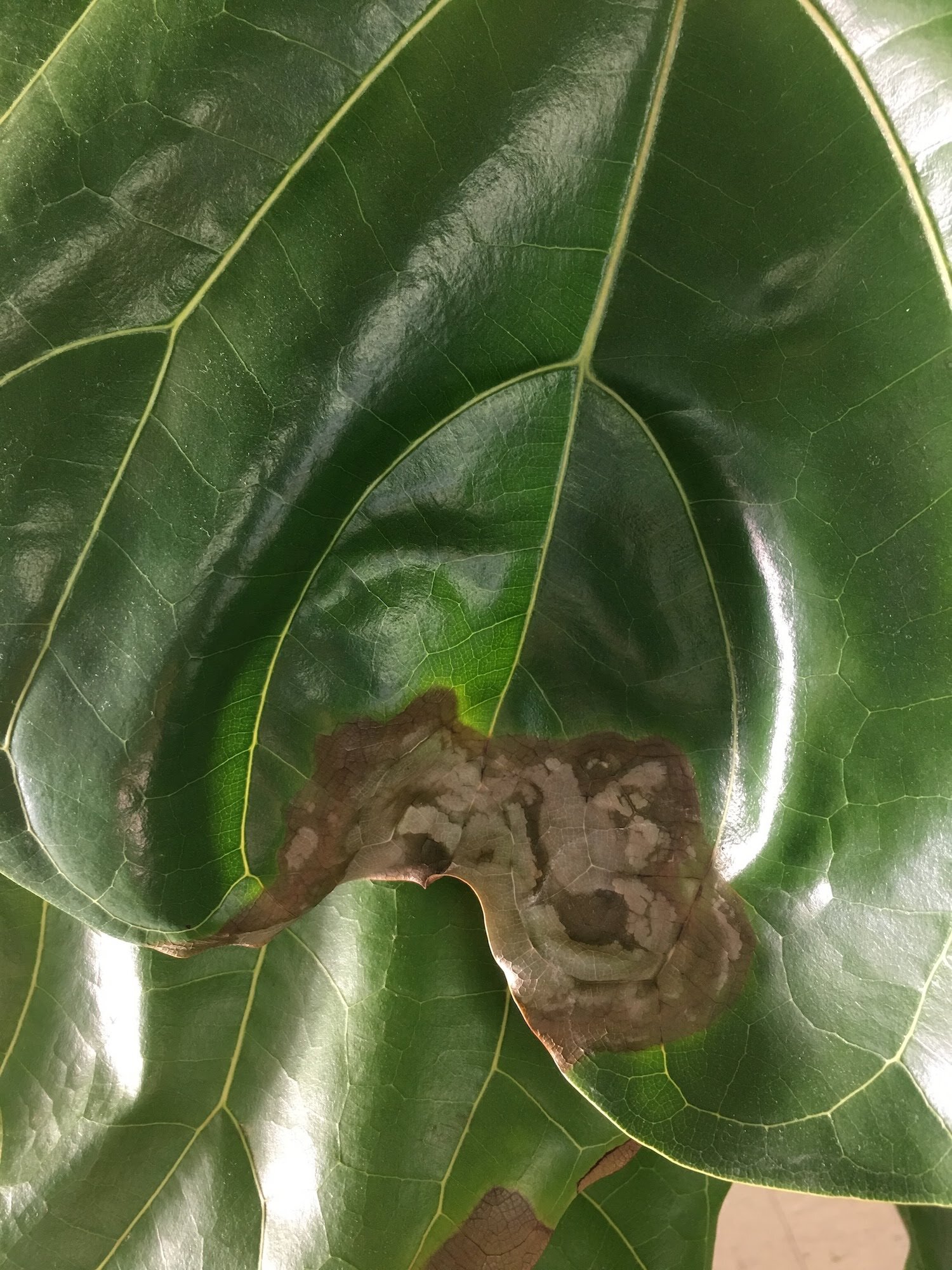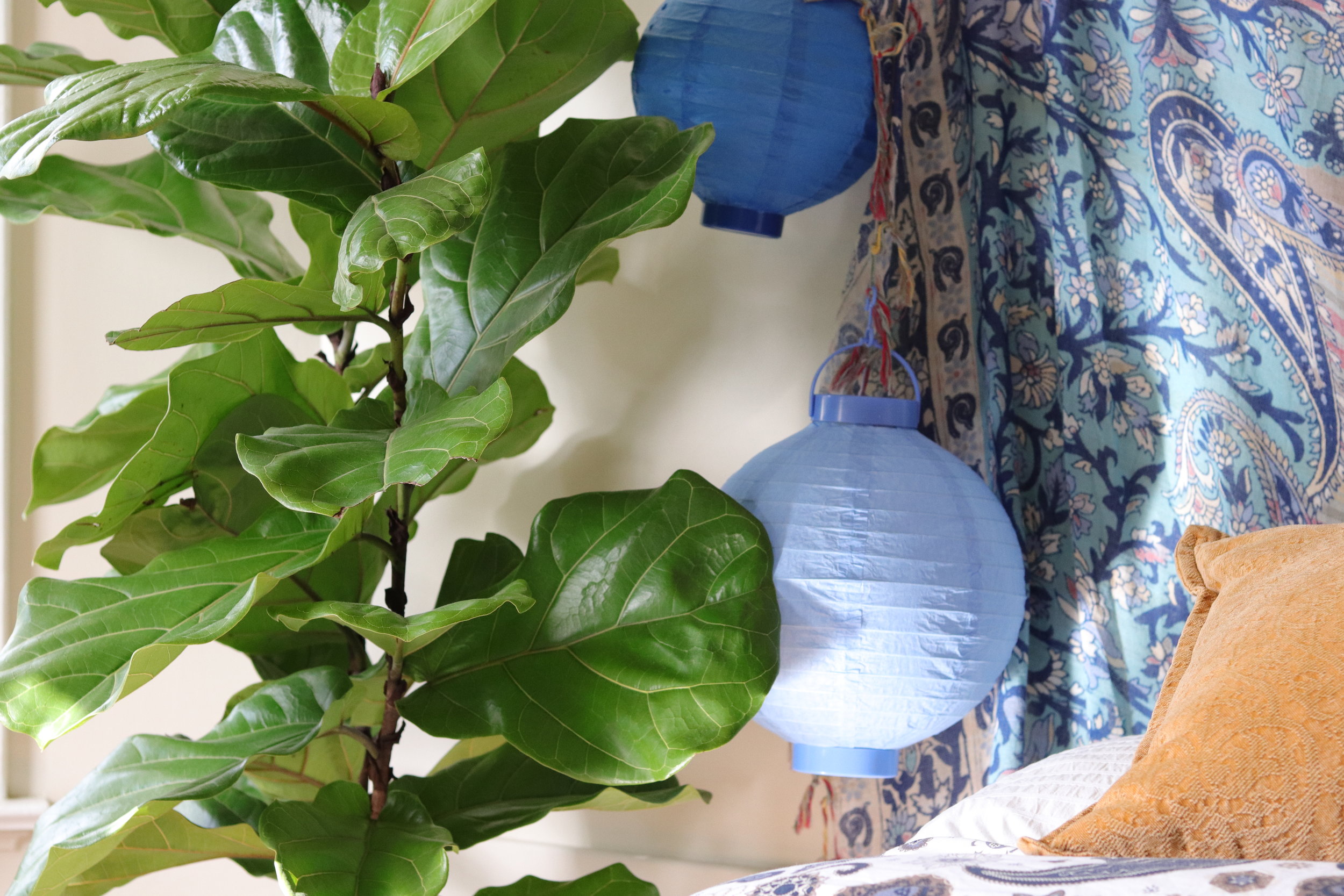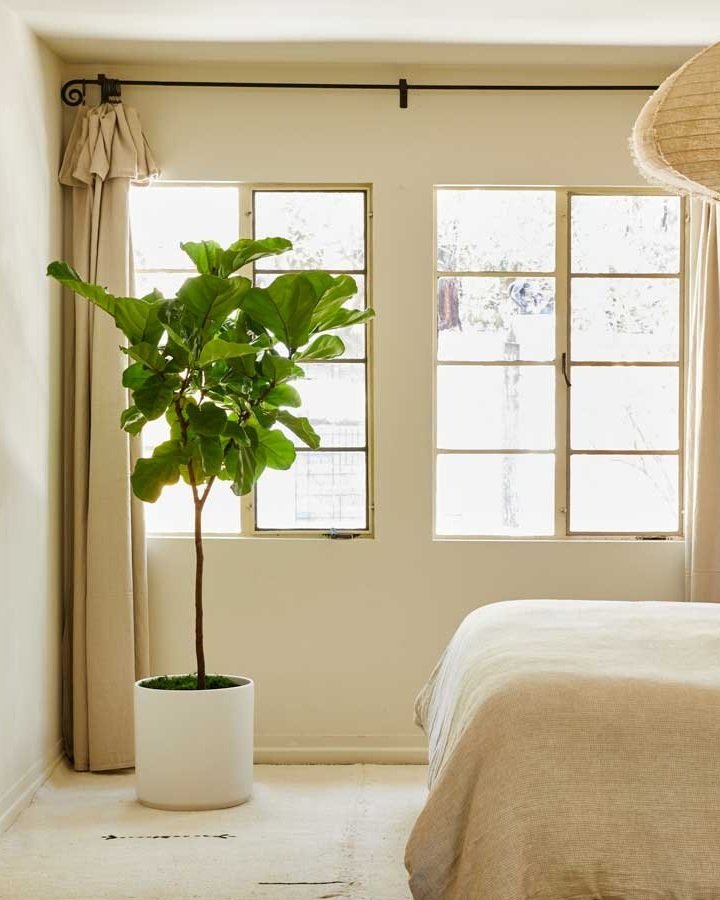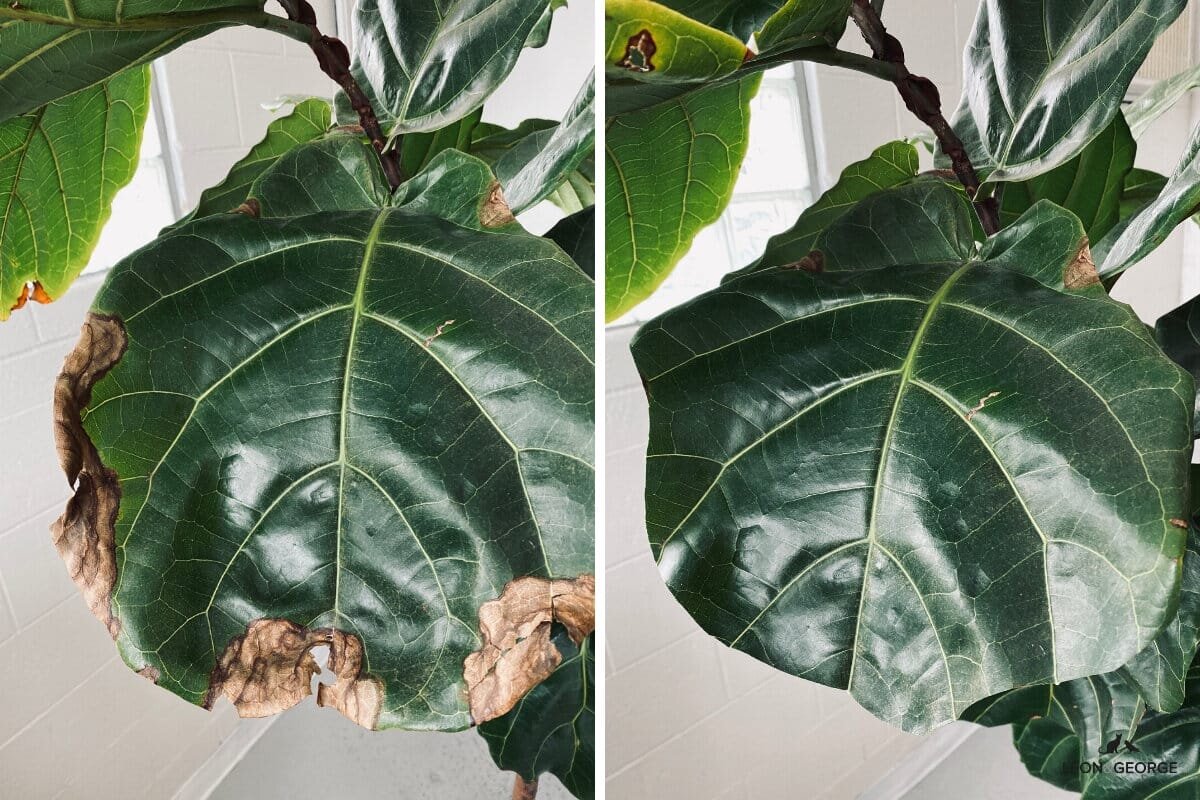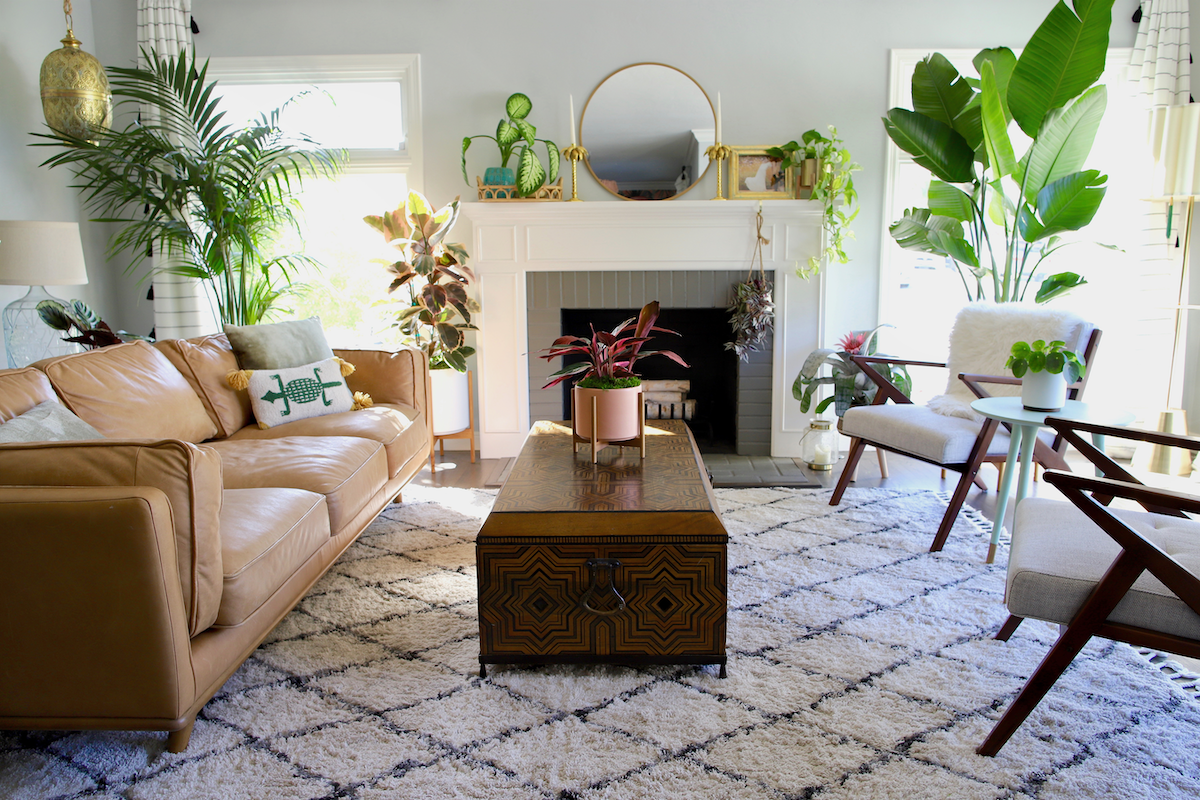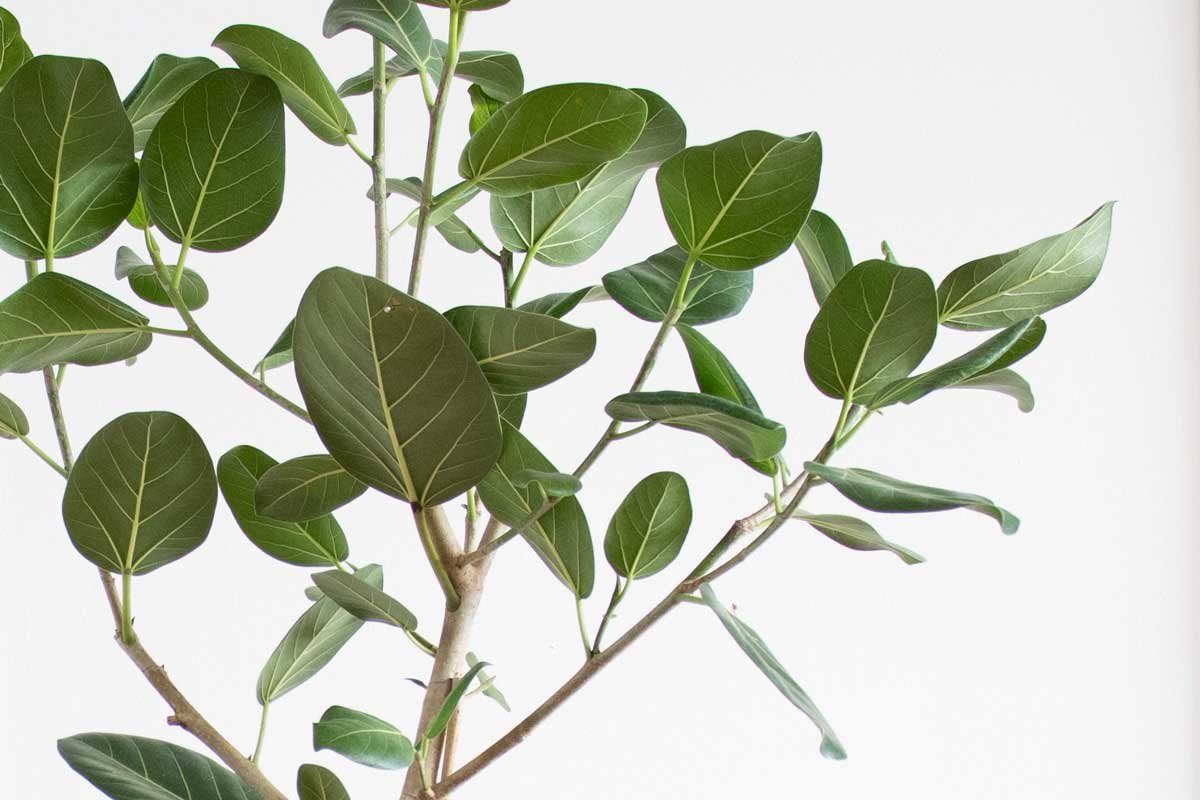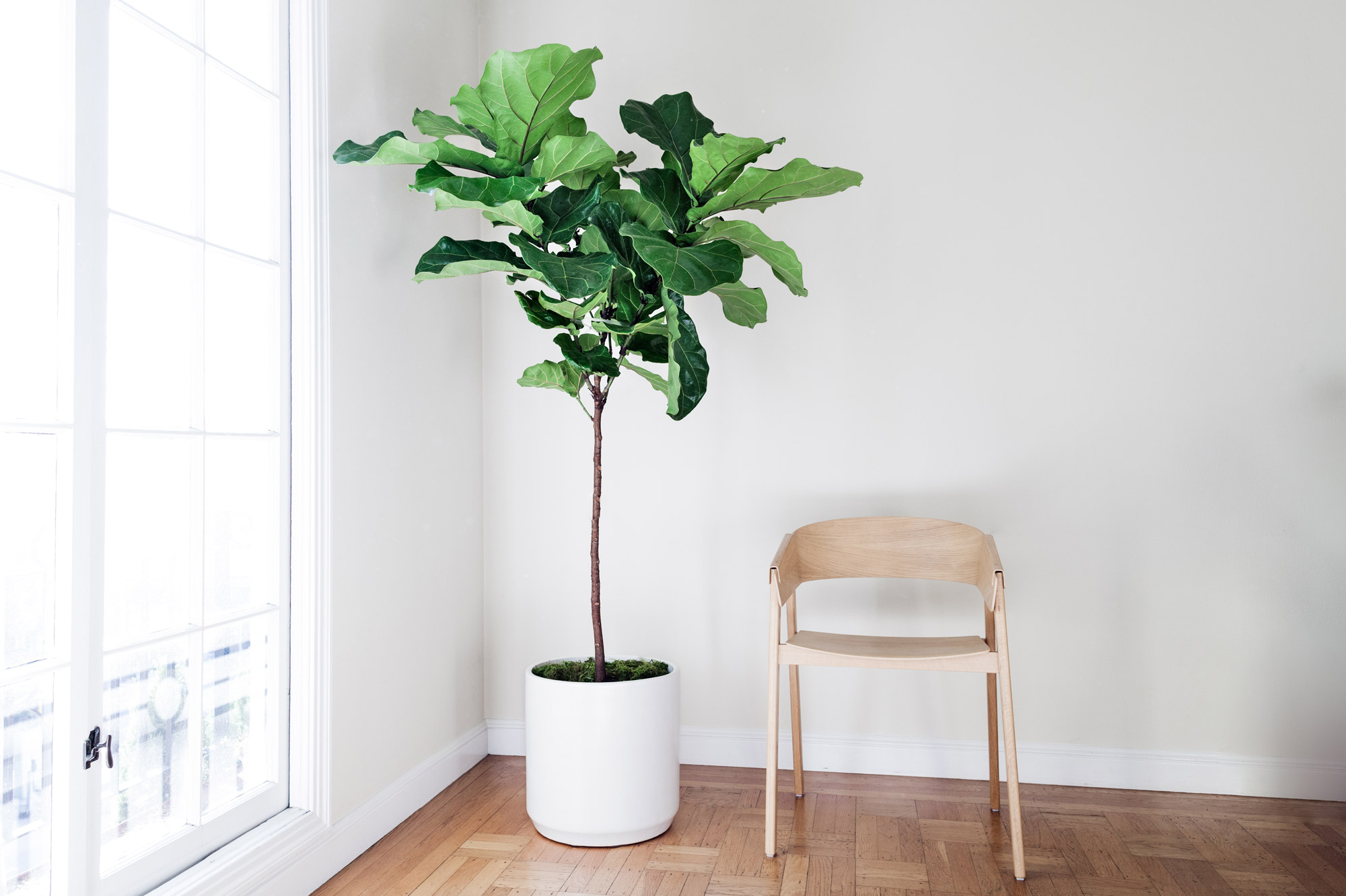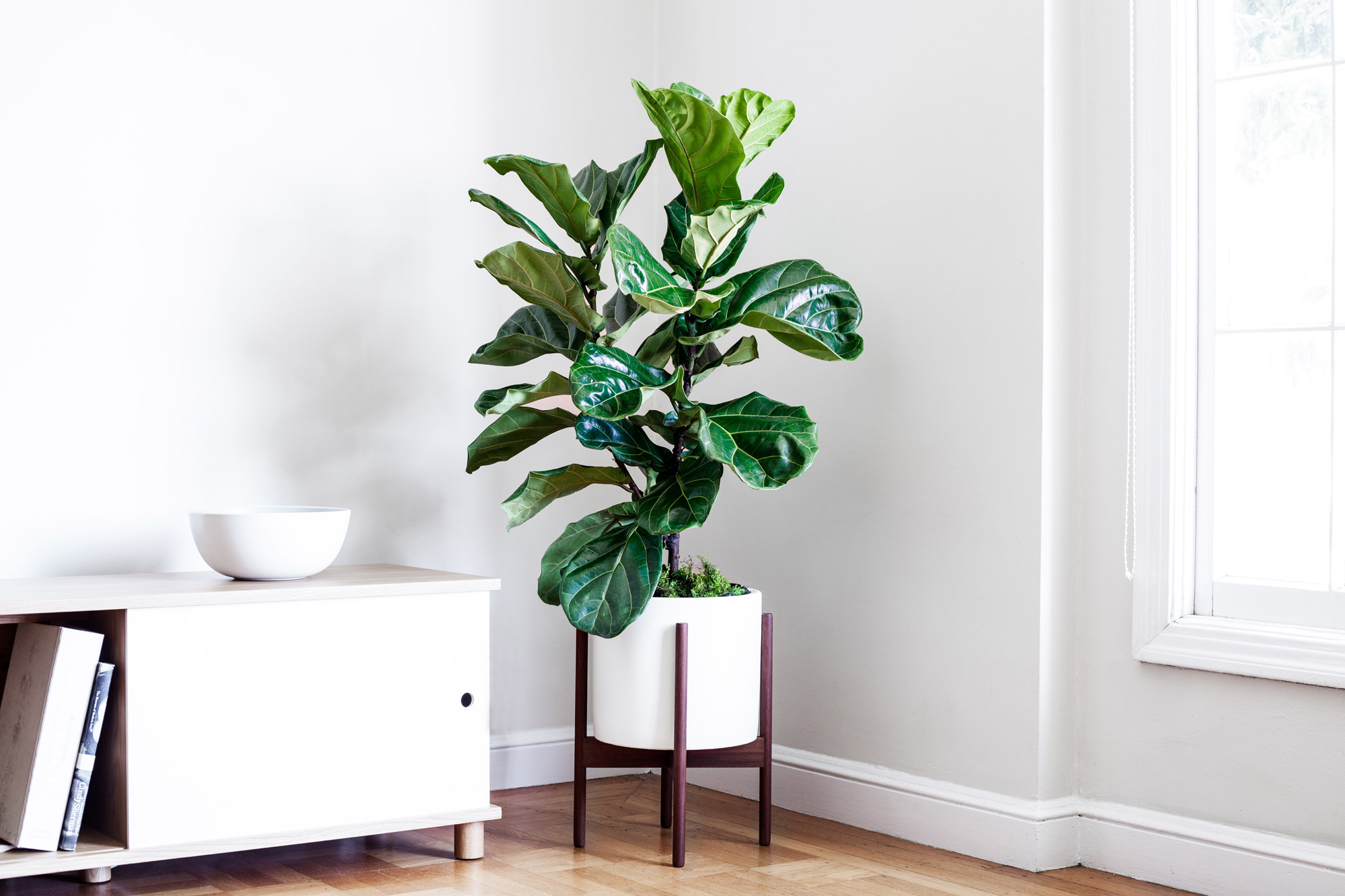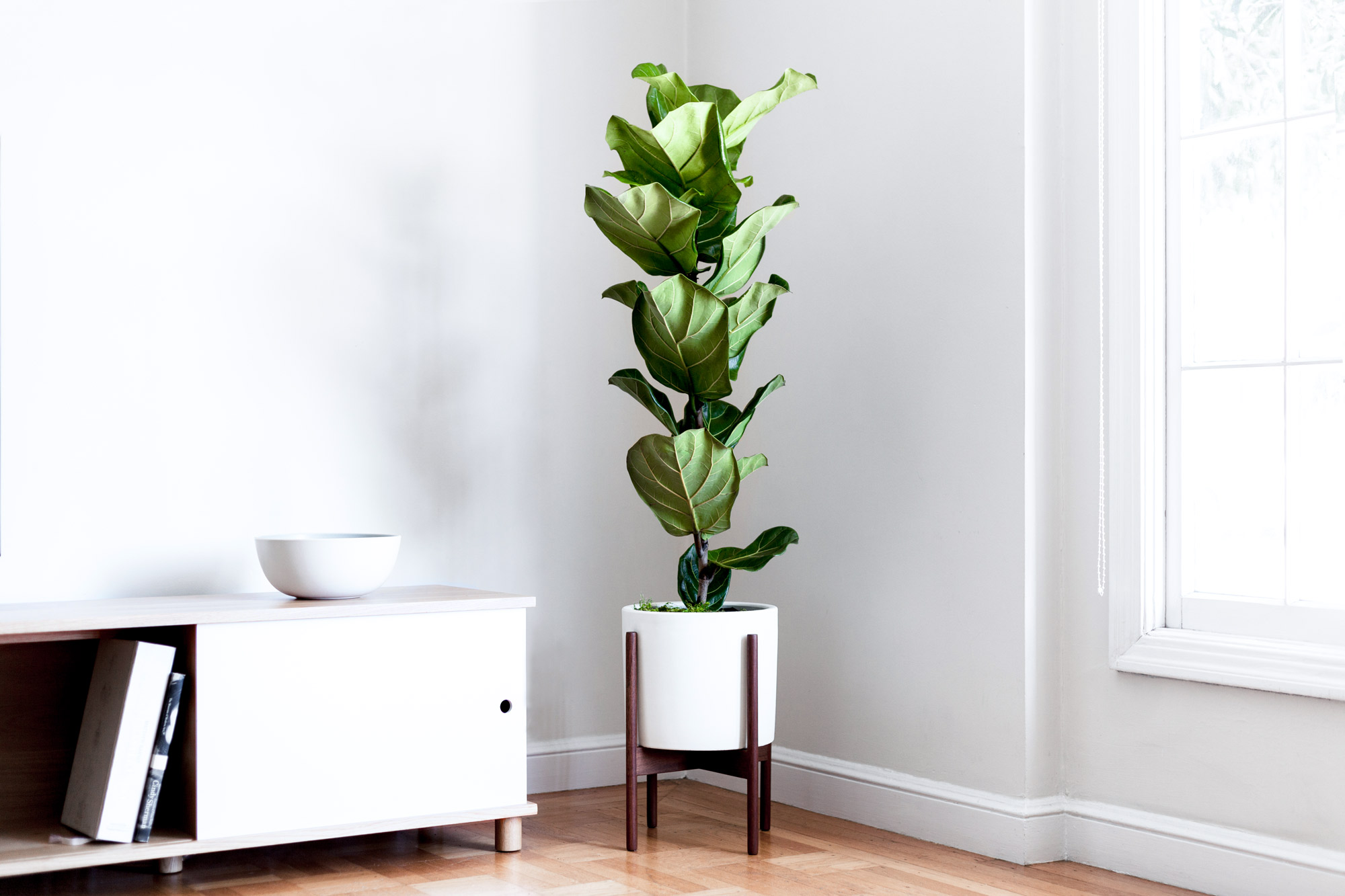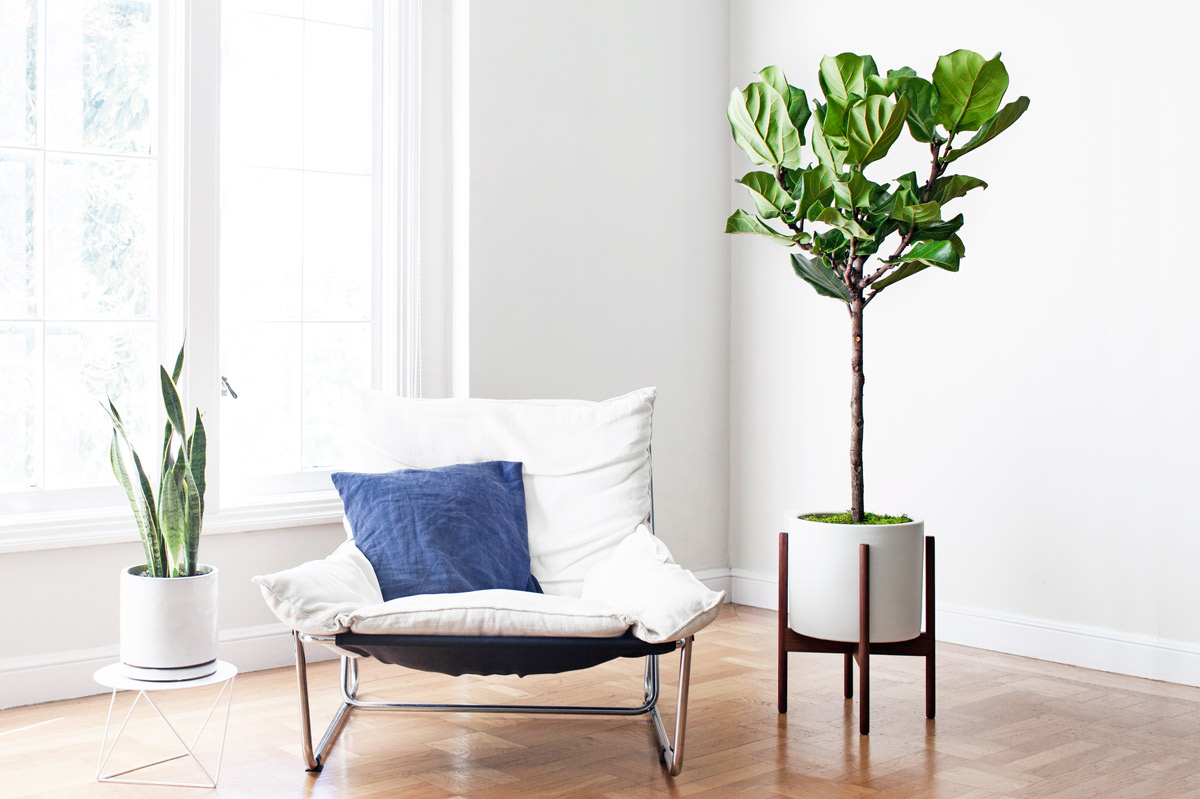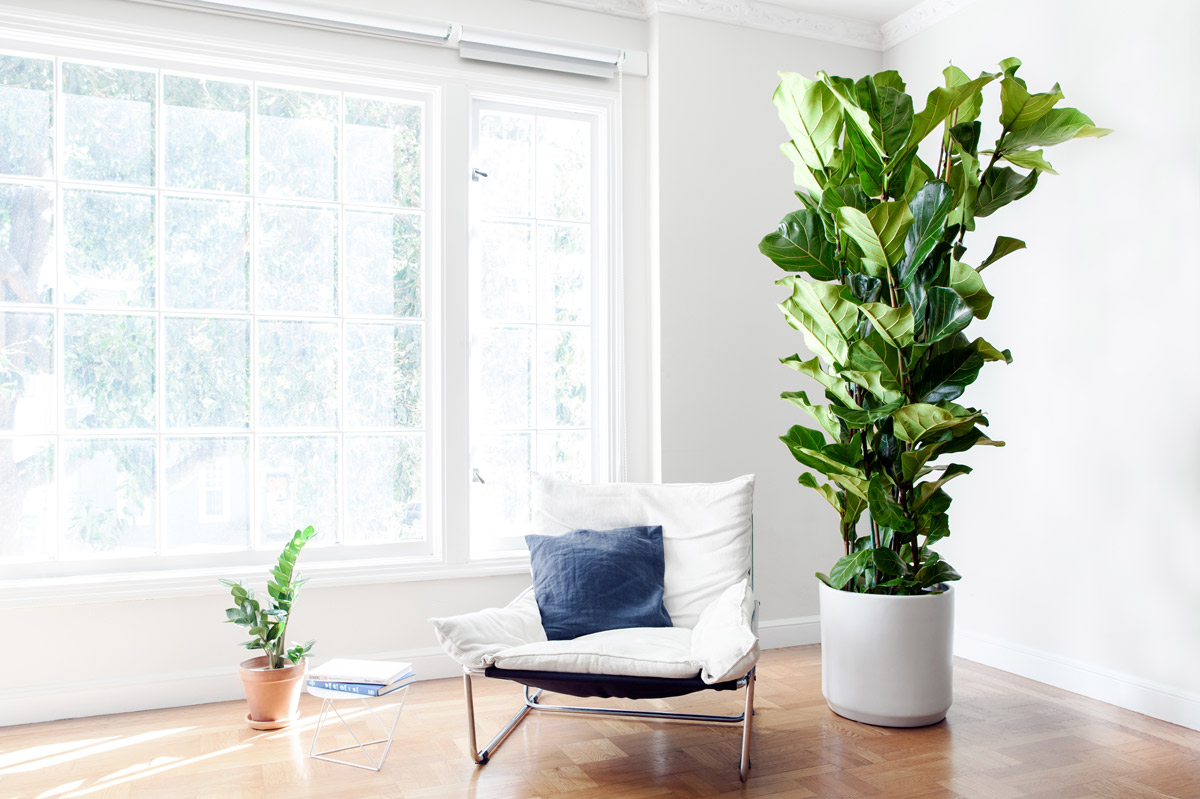When it comes to owning a Fiddle Leaf Fig, the best thing that you can do for your plant is place it in the optimal spot in your home (with watering properly a close second!). Fiddle Leaf Figs are incredibly picky about their placement, and need the perfect balance of bright sunlight without direct exposure to harsh rays. Too much sun and your plant will burn, but too little sun and you will have a plant that seems to barely grow, drops its leaves, and is susceptible to all sorts of illnesses. Read on if you want to place your Fiddle Leaf Fig in the best light!
Where to place your Fiddle Leaf Fig
Whenever you add a new plant to your collection try to consider the natural conditions in which they thrive. Fiddle Leaf Figs naturally grow under the bright African sun, although they are actually banyan trees in the wild. This means that they grow high up in the branches of other trees and are protected from the sun’s direct rays. As such, bright, filtered light is what is best for these plants.
If you have a large window that receives lots of light and has a sheer curtain, that is perhaps the most ideal setup. You want to find a happy balance between lots of light without it being too direct.
In certain temperate areas, such as parts of southern California, you can actually keep Fiddle Leaf Figs outside in full sun. Outside in domestic conditions these plants will typically only grow to 25 feet tall. If you’re going to keep one outside try to place it somewhere where it isn’t in the shadow of larger plants and where it cannot cast a shadow on smaller plants. Remember that if your plant normally lives indoors, you will want to slowly acclimate it to direct sun if you plan on moving it outdoors.
Natural Plant Food
Nourish your plants with this specially-formulated organic liquid plant food. Our Boost Vitaminé is made with potent nutrients from nature to help your plants grow and thrive all year long.
$24
Assessing Light for Fiddle Leaf Figs
While it can be tempting to place your Fiddle Leaf Fig wherever it best complements your decor, you (and your Fiddle!) will be better off in the long run if you consider first its light needs. It should be at least a couple feet away from any windows, although near a window is fine. You just want to avoid it getting too much direct sun. If you have a gauzy curtain that can filter the sun’s light for you Fiddle Leaf Fig that’s even better. Ideally, the window should be facing either south or east. You just don’t want to put a Fiddle Leaf Fig near a north-facing window as it likely won’t get enough light.
If you don’t know which direction the windows in your home face a simple way to find out is to use a compass app on your phone. Having this knowledge will make you an even better plant owner.
Photo credit : The Fiddle Leaf Fig Plant Resource Center
Which Direction Should Your Fiddle Leaf Fig’s Window Face?
Check to see which direction your window faces to be sure it’s a good match for your Fiddle. This guide should be helpful for those who live in North America:
North-facing windows receive the least amount of sunlight, so you don’t want to put your Fiddle Leaf Fig in front of one if you can help it. However, if you live in a southern temperate region such windows might receive enough light. The farther north of the equator you are the less light such windows receive.
East-facing windows receive a good amount of early morning sun, but they catch little of the sun’s afternoon light. This is a problem because your Fiddle Leaf fig needs at least 6 hours of cumulative sunlight a day. Consider the size of your window carefully and observe whether it receives any midday light.
West-facing windows receive the most midday light. This is when the sun’s rays are most intense. So you need to be careful is you are going to put your Fiddle Leaf Fig in front of one, its leaves could get scorched. Keep your plant at least a couple of feet away from the window to protect it.
South-facing windows receive the brightest sunlight for the longest period of time. This makes them ideal for Fiddle Leaf Figs. Just make sure you don’t place your plant directly by the window or you could risk burning its leaves.
Fiddle Leaf Figs are known for being finicky but they are able to adapt to less than ideal lighting. If you don’t have the best lighting for your plant just focus on making the rest of their care as good as possible. Be careful not to overwater and fertilize with fiddle leaf fig plant food. And don’t forget to rotate your Fiddle Leaf Fig when you water! You plant craves sunlight and will lean towards its light source over time. Leaves without regular exposure to sunlight will also be less healthy.
This post was adapted from the Fiddle Leaf Fig Plant Resource by expert Claire Akin. Head to their website to learn more about caring for the Fiddle Leaf Fig.
Indoor plants, potted & delivered
Premium plants paired with stylish ceramics, plus lifetime plant care support. Order online at leonandgeorge.com







